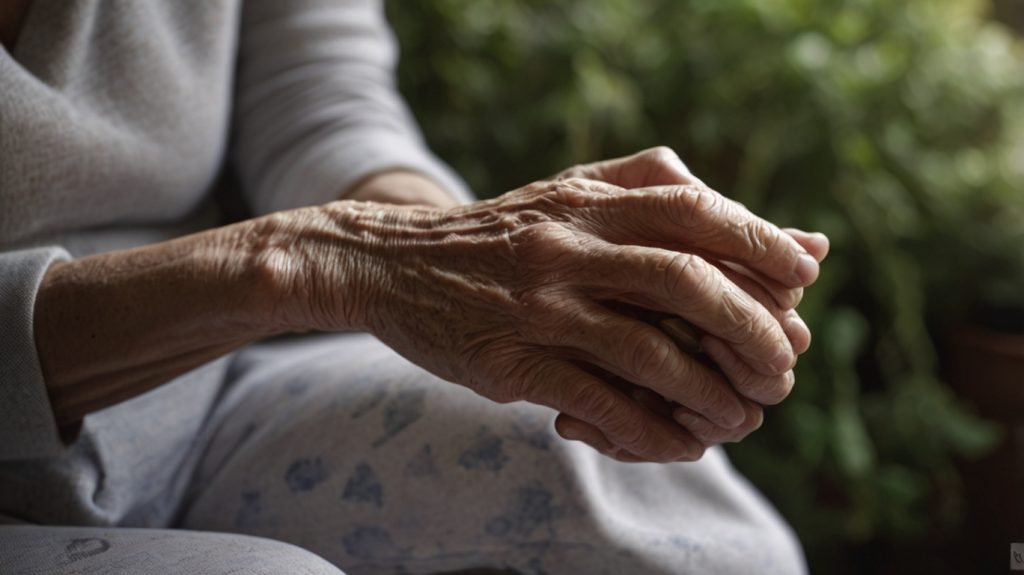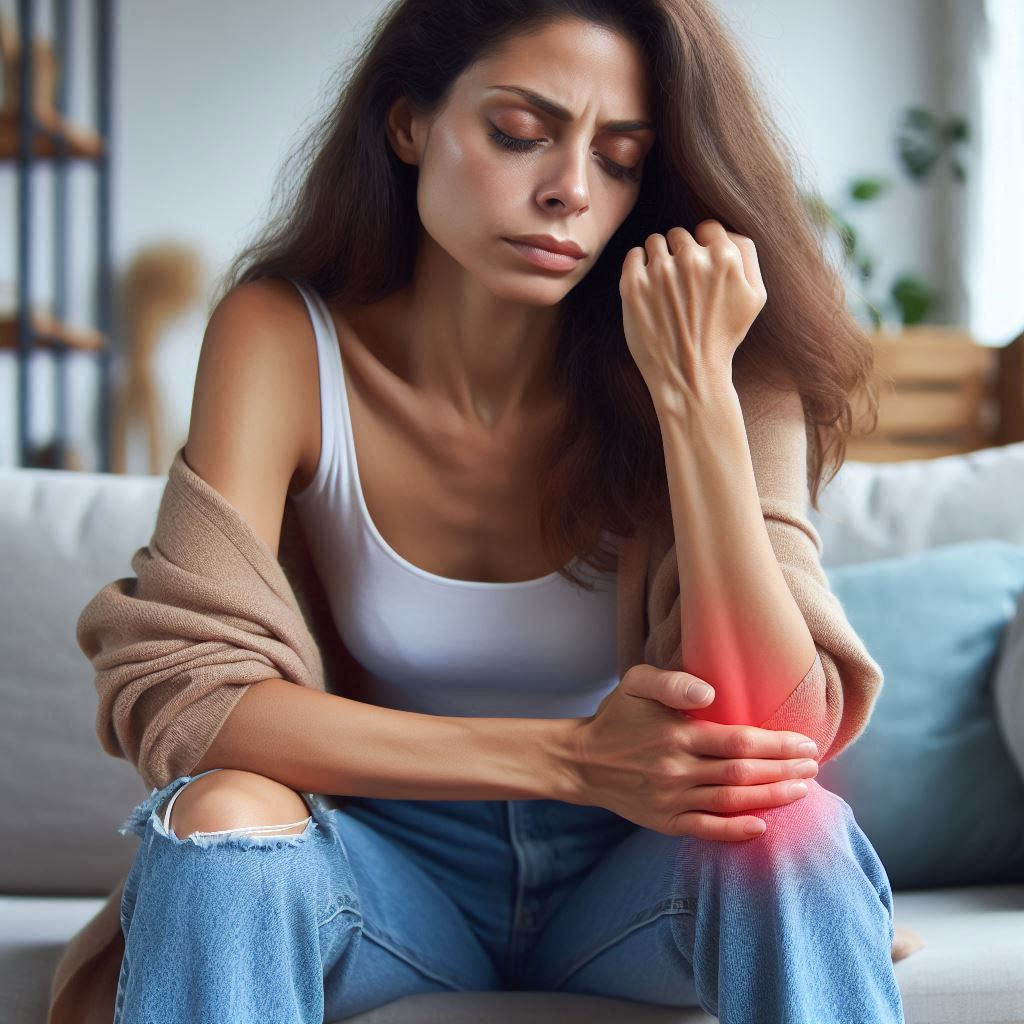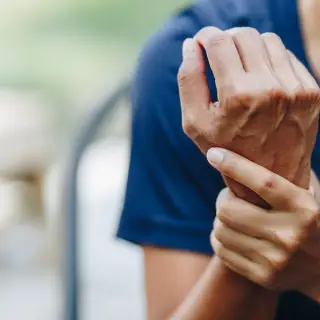Rheumatoid arthritis (RA) is a chronic autoimmune disorder that primarily affects the joints, causing inflammation, swelling, and pain. While the exact cause remains unknown, early detection and management are key to preventing joint damage and improving quality of life. This blog will explore both early signs of rheumatoid arthritis and exercise tips to help manage the condition effectively.
Early Signs of Rheumatoid Arthritis
Recognizing RA in its early stages can be challenging, as its symptoms often mimic other conditions. However, there are some common indicators to look out for:

1. Persistent Joint Pain and Swelling
Joint pain is one of the earliest and most common symptoms of RA. Typically, the small joints of the hands, wrists, and feet are affected. The pain is usually symmetrical, meaning both sides of the body experience discomfort. This is different from other forms of arthritis, like osteoarthritis, where the pain might be more localized.


2. Morning Stiffness
Another tell-tale sign is stiffness in the joints that lasts for more than 30 minutes after waking up. This stiffness may occur even when the joints are not visibly swollen or painful. Unlike other types of arthritis, RA stiffness tends to last longer and may persist throughout the day.
3. Fatigue
RA can cause general feelings of tiredness, even when you haven’t engaged in physically demanding activities. This fatigue can come on suddenly, making daily tasks feel overwhelming.


4. Unexplained Weight Loss
As the body’s immune system mistakenly attacks its own tissues, the chronic inflammation can lead to unexplained weight loss. If you’re losing weight without changing your diet or exercise routine, and you’re experiencing other RA symptoms, it might be time to visit a healthcare professional.
5. Low-Grade Fever
Since RA is an autoimmune condition, the body sometimes reacts by triggering a low-grade fever. This can occur in combination with joint pain and swelling.


6. Nodules Under the Skin
In some cases, small, firm lumps called rheumatoid nodules form under the skin, especially around pressure points like the elbows. These nodules vary in size and can be painless but are a significant marker of RA.
Recognizing these early symptoms is crucial for starting treatment before significant joint damage occurs. If you notice any of these signs, consult a healthcare provider for a proper diagnosis.
Exercise Tips for People with Rheumatoid Arthritis
Exercise might seem counterintuitive when your joints are in pain, but staying active is one of the best ways to manage RA symptoms. Regular physical activity can help maintain joint function, reduce stiffness, and improve overall well-being. However, it’s important to engage in the right kind of exercise.
1. Low-Impact Aerobic Exercise
Low-impact activities are ideal for RA sufferers as they help keep the cardiovascular system healthy without putting too much strain on the joints. Some excellent options include:
- Walking: A simple yet effective way to stay active. Start with short walks and gradually increase the distance.
- Swimming: Water exercise reduces joint stress while providing a full-body workout. Swimming or water aerobics can help improve flexibility and endurance.
- Cycling: Whether it’s on a stationary bike or outdoors, cycling is a great way to get your heart pumping without overloading your joints.
2. Strength Training
Building muscle around your joints provides added support and reduces the load on them. Focus on low-weight, high-repetition exercises to strengthen the muscles without straining the joints. Resistance bands and light dumbbells are great tools to start with.
- Key Areas: Work on the muscles around the knees, hips, and shoulders to improve joint stability. Leg lifts, bicep curls, and seated rows are examples of RA-friendly exercises.
3. Flexibility and Stretching
Maintaining flexibility is essential for reducing stiffness and preserving joint function. Stretching exercises should be gentle and performed daily to improve your range of motion. Yoga and Pilates are particularly helpful for stretching and flexibility.
- Key Stretches: Focus on stretching the wrists, ankles, and large muscle groups like the quads and hamstrings. Ensure that you hold each stretch for at least 15-30 seconds to get the full benefit.
4. Balance and Coordination Exercises
RA can sometimes affect your balance due to joint instability. Incorporating balance exercises into your routine helps improve coordination and prevent falls.
- Examples: Simple activities like standing on one foot or practicing Tai Chi can enhance your balance. Yoga also helps improve both balance and flexibility.
5. Rest and Recovery
It’s important to listen to your body and allow yourself to rest when needed. Overexerting yourself can lead to increased joint pain or flare-ups. Strike a balance between activity and rest to manage RA effectively.
Final Thoughts
Rheumatoid arthritis can be a daunting diagnosis, but with early detection and the right management strategies, it is possible to maintain a high quality of life. Recognizing the early signs of RA and incorporating regular, gentle exercise into your routine can help reduce symptoms and improve joint function over time. If you’re unsure about starting an exercise routine, consult with your healthcare provider or a physical therapist to create a program tailored to your needs.
By understanding the early symptoms and adopting a structured exercise plan, you can take control of your rheumatoid arthritis and live a more active, fulfilling life.
Keyword:
- Early signs of rheumatoid arthritis
- Rheumatoid arthritis symptoms
- RA joint pain relief
- RA morning stiffness
- RA fatigue and weight loss
- Rheumatoid arthritis exercise tips
- Best exercises for rheumatoid arthritis
- Low-impact exercises for RA
- Yoga for rheumatoid arthritis
- RA strength training
- How to manage RA pain
- RA flexibility exercises
- RA balance exercises
- Living with rheumatoid arthritis
- Rheumatoid arthritis treatment